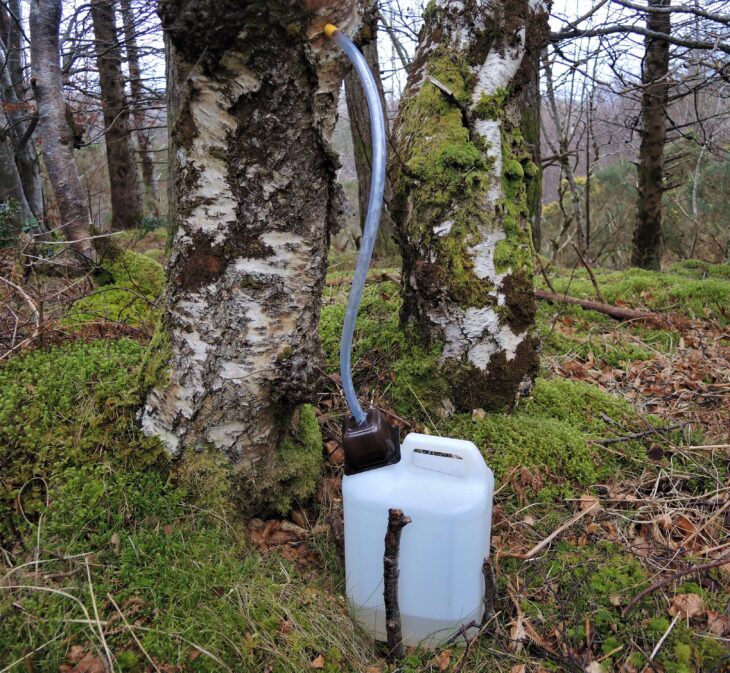Tapping into Nature: Woodland Artisan Courses
,
Guest Blog from our course leader Chris on the recent Birch Sap course.
As I slowly get to know other wood carvers around the country I’m becoming aware that everyone has their speciality – some people make spoons, others cups, some people make incredibly intricate wooden jewellery while others build houses out of logs. This has got me wondering what my speciality is within the world of wood working.
At present I make spoons, cooking utensils, cups, bowls, furniture, pendants, tool handles and charcoal while I heat my wooden home by burning wood and also spend time in woodlands foraging for nuts, fruits and edible fungi. I feel that I’m a real generalist incorporating lots of tree related products into my daily life. And maybe that’s my speciality – making a living from trees and the wider woodland that they form, using them to provide a financial income as well as for heat and shelter and for some of the food that helps me survive.
Collecting birch sap is another piece of this jigsaw as it serves as a healthy drink straight from the tree as well as a slightly less healthy syrup and home brew. During March, as the trees are preparing to grow their leaves all over again, they’re busy pumping sap and the nutrients and sugar it contains from their roots to the tips of their branches. By drilling a small hole in the trunk it’s possible to harvest some of this sap for our benefit without having too much of an impact on the tree itself.
And it’s wonderfully refreshing. 98% water but the freshest water you’ve ever tasted, filtered through tree roots and fortified with calcium, vitamin C, potassium, manganese, thiamin and more.

